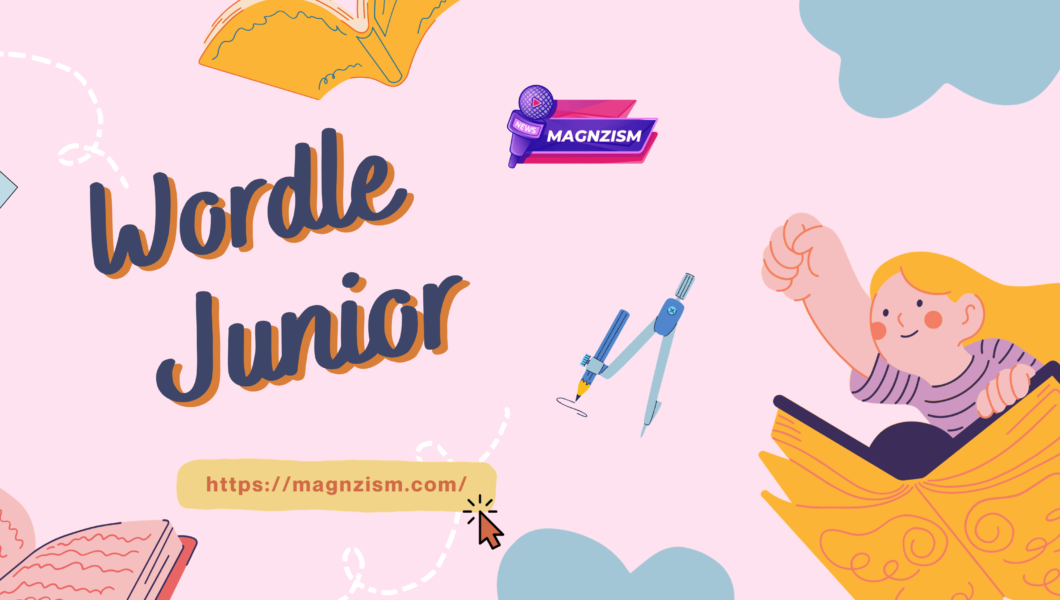Wordle Junior, a captivating and educational word game designed for young learners, has become a beacon for fostering literacy skills, creativity, and critical thinking in children. This article delves into the world of Wordle Junior, exploring its origins, gameplay, educational benefits, and its role in shaping early language development.
Origins and Evolution:
Wordle Junior, an offshoot of the popular Wordle game, was conceived to cater specifically to younger players, making language learning an engaging and enjoyable experience. Developed with careful consideration of age-appropriate content and design, Wordle Junior serves as a bridge between fun and educational gameplay.
The game’s evolution is rooted in the recognition that children benefit immensely from interactive and entertaining methods of learning. Wordle Junior capitalizes on this principle, offering an accessible platform where kids can expand their vocabulary, enhance spelling skills, and ignite their imagination through word exploration.
Gameplay Dynamics:
Wordle Junior retains the essence of the original game while tailoring the experience to suit the developmental needs of younger players. The gameplay dynamics are designed to be simple, yet effective in stimulating cognitive processes. Here’s an overview of the key elements:
1. Word Formation:
Players are presented with a set of letters and are tasked with creating words from the available alphabet. The challenge lies in constructing words that fit the given criteria, promoting critical thinking and linguistic creativity.
2. Visual Engagement:
The Wordle Junior Game incorporates vibrant and visually appealing graphics to capture the attention of young players. Colorful themes, animated characters, and interactive elements contribute to an immersive experience.
3. Progressive Difficulty Levels:
Wordle Junior features progressive difficulty levels, allowing children to start with simpler word formations and gradually advance to more complex challenges. This ensures that the game remains both enjoyable and intellectually stimulating.
4. Educational Feedback:
The game provides constructive feedback to players, reinforcing correct word choices and guiding them when faced with challenges. This positive reinforcement fosters a supportive learning environment.
Educational Benefits:
Wordle Junior goes beyond entertainment; it serves as an educational tool with a range of benefits for young learners:
1. Vocabulary Expansion:
Through the game’s word-forming challenges, children encounter and learn new words, expanding their vocabulary in an interactive and contextually relevant manner.
2. Spelling Proficiency:
The process of constructing words in the Wordle Junior Game contributes to improved spelling skills. The repetition of word formation tasks aids in the reinforcement of correct spelling patterns.
3. Cognitive Development:
Wordle Junior stimulates cognitive processes such as critical thinking and problem-solving. The need to decipher letter combinations to form valid words engages young minds in a playful yet intellectually enriching way.
4. Language Exploration:
The game encourages curiosity about language by presenting diverse word options. This exploration fosters an early appreciation for linguistic diversity and expression.
5. Social Interaction:
Wordle Junior often includes multiplayer or cooperative features, promoting social interaction among children. Collaborative gameplay enhances communication skills and teamwork.
Parental Guidance and Safety:
Given the interactive nature of digital games, it incorporates features to ensure a safe and age-appropriate environment for young players:
1. Parental Controls:
The game may include parental control settings, allowing parents to manage and monitor their child’s gaming experience. This includes regulating playtime, setting educational goals, and customizing content accessibility.
2. Adherence to Privacy Standards:
junior wordle developers prioritize compliance with privacy standards, ensuring that any personal information is handled responsibly and securely.
3. Educational Supervision:
Encouraging parental involvement in the child’s gaming experience, it suggests that parents actively participate in educational discussions, reinforcing the learning aspects of the game.
Future Innovations and Adaptations:
As technology advances and educational methodologies evolve, the junior wordle may witness future innovations and adaptations:
1. Incorporation of AI:
Artificial Intelligence (AI) integration could enhance the adaptability of the game, tailoring challenges to individual learning styles and pacing.
2. Multilingual Versions:
To cater to a global audience, future versions of Junior Wordle might include multilingual options, exposing children to a variety of languages and cultures.
3. Cross-Platform Compatibility:
Expanding accessibility, the game may evolve to be compatible across various platforms, allowing seamless transitions between devices for a continuous learning experience.
4. Enhanced Learning Analytics:
The inclusion of advanced learning analytics could provide parents and educators with detailed insights into a child’s progress, helping tailor educational strategies to individual needs.
Conclusion:
Wordle Junior stands as a testament to the harmonious fusion of entertainment and education, offering a delightful journey into the world of words for young learners. With its engaging gameplay dynamics, educational benefits, and commitment to safety, Wordle Junior exemplifies the potential of digital games as valuable tools in shaping the cognitive and linguistic development of the next generation. As the game continues to evolve, it holds the promise of becoming an enduring companion in the early learning adventures of children worldwide.






